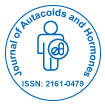Our Group organises 3000+ Global Conferenceseries Events every year across USA, Europe & Asia with support from 1000 more scientific Societies and Publishes 700+ Open Access Journals which contains over 50000 eminent personalities, reputed scientists as editorial board members.
Open Access Journals gaining more Readers and Citations
700 Journals and 15,000,000 Readers Each Journal is getting 25,000+ Readers
Indexed In
- Google Scholar
- Sherpa Romeo
- Genamics JournalSeek
- RefSeek
- Directory of Research Journal Indexing (DRJI)
- Hamdard University
Useful Links
Recommended Journals
Share This Page
| Maria Kontoyianni | ||

|
Maria Kontoyianni
|
|
| Biography | ||
Dr. Maria Kontoyianni is an Assistant Professor in Medicinal Chemistry, in the School of Pharmacy. She holds a Ph.D. in computational chemistry from the University of North Carolina, Chapel Hill, where she worked under the supervision of Professor Phil Bowen. After a post-doctoral fellowship with ProfessorTerry Lybrand at the University of Washington, she joined ZymoGenetics, where she focused on ligand-based design and homology modeling. She then moved to Research & Development of Fortune 500 companies, such as Johnson & Johnson and Procter & Gamble, assuming positions of greater responsibility focusing on various therapeutic targets in all stages of drug discovery. |
||
| Research Interest | ||
Zymo genetics, Ligand based design and homology modeling and drug discovery. |
||
| Interview | ||
1. How many years have you been associated with the current research? Six years, but have been involved in structure-based design for the last 17 years. 2. What is the research topic you are working on now? Cytochrome P450’s, computational prediction of protein function and ligand-protein associations, GPCR modeling. 3. What are attributes for a quality article? Well-stated hypothesis, thorough selection of the best approaches to address the given question, careful analysis of the results, ability to examine the results in order to “synthetically” draw the best conclusion, and finally a description of the limitations and potential of the described research. 4. Do you have any research funding (NIH or other national funding) now? Yes. I am a co-PI on an R01. 5. When did you become an editor of OMICS Journal? In 2011. 6. What is your greatest career accomplishment? This is a hard question to answer, since scientists are by nature self-critical. I would say accumulation of knowledge and research experience having seen both aspects of research, in that I was in pharmaceutical and biotechnology sectors prior to my joining academia. 7. How does the published scientific content assist the potential researchers? If it is thorough and well-designed, it can address important questions and offer a step toward a better understanding. 8. What is the purpose of serving as an editor? 1. Ensure that the journal provides the readers with what they need; 2. Make every effort to attract the best manuscripts within the scope of the journal; 3. Maintain high standards for the journal’s integrity and policies; 4. Capitalize on interactions internally (members of the Editorial Board, and staff) and hopefully with scientists contributing to the journal. 9. Do you have any patents? Yes, seven US patents and one WO. 10. Have you contributed any editorials or papers (any types) to OMICS Journals in the past two years? Yes, three times thus far to open access journals, with two to the Journal of Autacoids: 1. Kontoyianni, M., Individualized Medicine: An Alternative but not Opposing Path to Gene Therapy, JSM Biotechnol. Bioeng. 2013, 1(1), 1005. 2. Kontoyianni, M., A Decade Later, J. Autacoids 2012, 1(3), e112. 3. Kontoyianni, M., G Protein Coupled Receptors: Druggability and Structural Aspects”, J Autacoids 2015, 5(1), e130. 11. Do you plan to contribute any editorials or papers to OMICS Journals in the next year? Yes. 12. How would you define your experience with the OMICS Group? I have not had much interaction. The most critical advice would be that they stay focused, are organized and responsive to the speakers participating at conferences and attendees. 13. Would you recommend OMICS to your friends or colleagues? Yes, however, there is a lot ahead of us in order to make the journal better recognized by the scientific community. 14. How do you differentiate the Journal of Autacoids from other journals in the field? It is selective in its focus, yet open in its applications and applicability. Specifically, the journal zooms into the autacoids, which act as hormones. However, their biological actions are quite broad, and in turn impact several disease states and consequently fields of research. |
||

 Spanish
Spanish  Chinese
Chinese  Russian
Russian  German
German  French
French  Japanese
Japanese  Portuguese
Portuguese  Hindi
Hindi